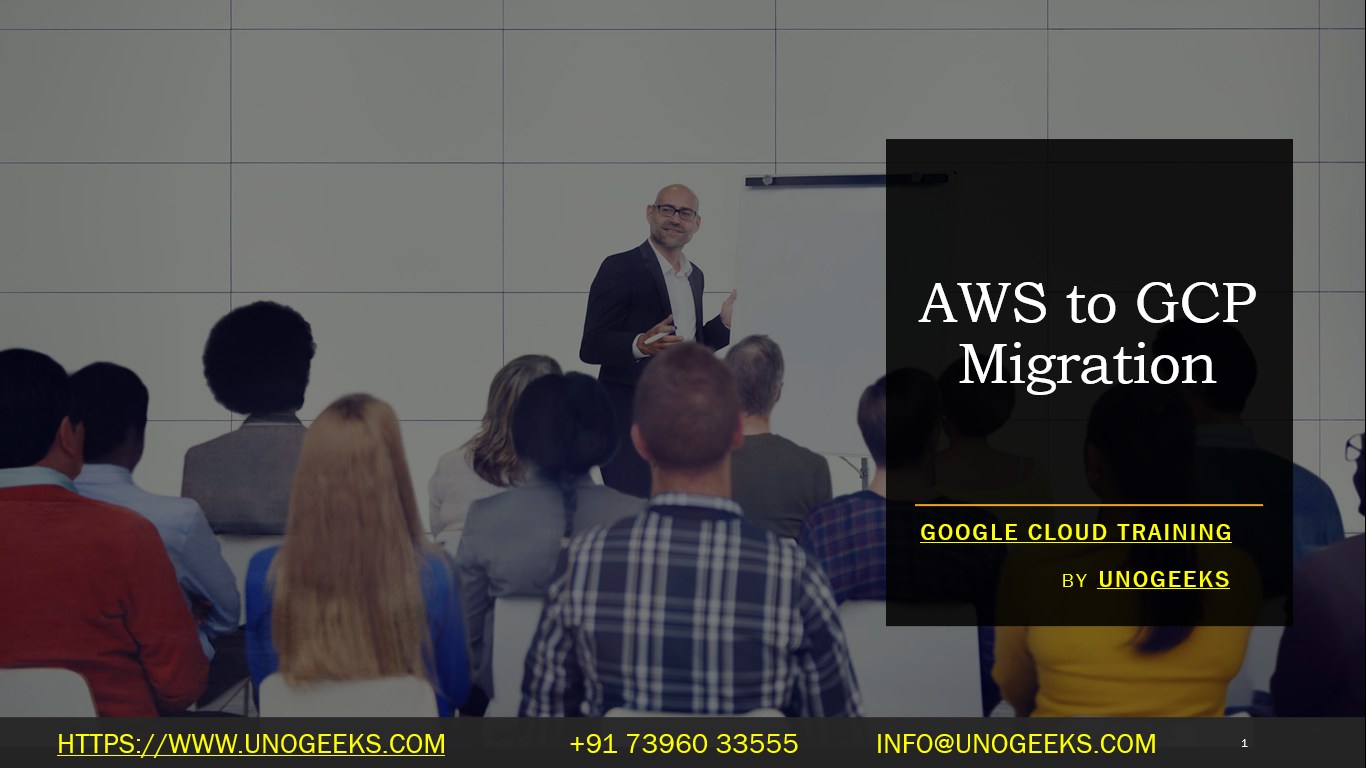AWS to GCP Migration
Migrating from AWS (Amazon Web Services) to GCP (Google Cloud Platform) involves several steps to ensure a smooth transition of your applications and infrastructure. Here’s a general overview of the migration process:
Assess Your Environment: Begin by assessing your existing AWS environment and understanding its architecture, dependencies, and resource utilization. Identify the applications, services, and data that need to be migrated to GCP.
Design the GCP Environment: Plan and design your GCP environment, taking into consideration factors such as networking, storage, compute resources, and security. Determine the best GCP services and configurations that align with your requirements.
Data Migration: Determine the approach for migrating your data from AWS to GCP. You can use various methods, such as direct transfer, storage snapshots, or data replication. Ensure data integrity and minimize downtime during the migration process.
Application Migration: Decide on the approach for migrating your applications. This can involve rehosting (lift-and-shift), rearchitecting, or rebuilding applications using GCP services. Adapt your applications to use GCP-specific APIs, services, and infrastructure components as needed.
Network Connectivity: Set up network connectivity between AWS and GCP environments to establish communication between resources during the migration phase. This can involve setting up VPN connections, Direct Connect, or interconnectivity through service providers.
Testing and Validation: Perform thorough testing of your migrated applications and infrastructure on GCP to ensure they function as expected. Validate performance, functionality, and data integrity to mitigate any potential issues.
Cut-Over and Go-Live: Once testing is successfully completed, plan the cut-over from AWS to GCP. This involves finalizing the data synchronization, redirecting DNS records, updating application configurations, and ensuring a smooth transition for users and customers.
Post-Migration Optimization: Continuously monitor and optimize your GCP environment to take advantage of its services and features. Optimize resource usage, implement security best practices, and leverage GCP’s analytics and monitoring tools for improved performance and cost efficiency.
Throughout the migration process, it’s essential to involve your team, communicate with stakeholders, and follow best practices for minimizing disruptions and ensuring a successful migration. Consider engaging Google Cloud’s migration experts or consulting partners for guidance and support during the migration process.
It’s important to note that the specific migration approach may vary based on the complexity of your AWS environment, the specific services being used, and your business requirements. It’s recommended to conduct a thorough assessment and engage with GCP experts or partners to tailor the migration plan to your specific needs.
Google Cloud Training Demo Day 1 Video:
Conclusion:
Unogeeks is the No.1 IT Training Institute for Google Cloud Platform (GCP) Training. Anyone Disagree? Please drop in a comment
You can check out our other latest blogs on Google Cloud Platform (GCP) here – Google Cloud Platform (GCP) Blogs
You can check out our Best In Class Google Cloud Platform (GCP) Training Details here – Google Cloud Platform (GCP) Training

———————————-
For Training inquiries:
Call/Whatsapp: +91 73960 33555
Mail us at: info@unogeeks.com
Our Website ➜ https://unogeeks.com
Follow us:
Instagram: https://www.instagram.com/unogeeks
Facebook: https://www.facebook.com/UnogeeksSoftwareTrainingInstitute
Twitter: https://twitter.com/unogeeks
